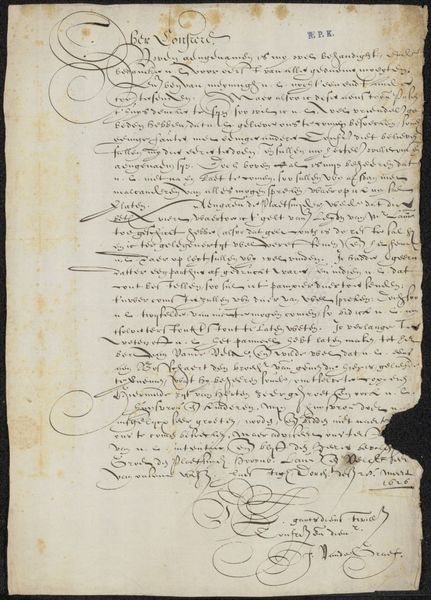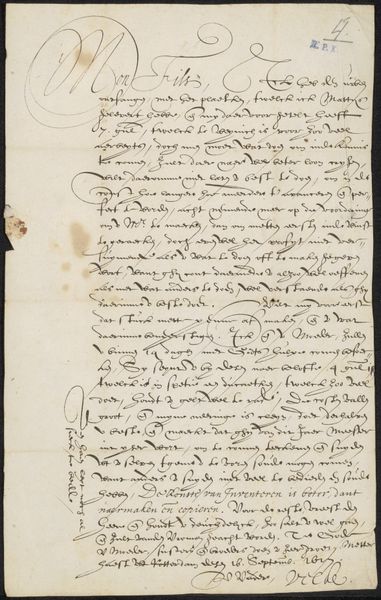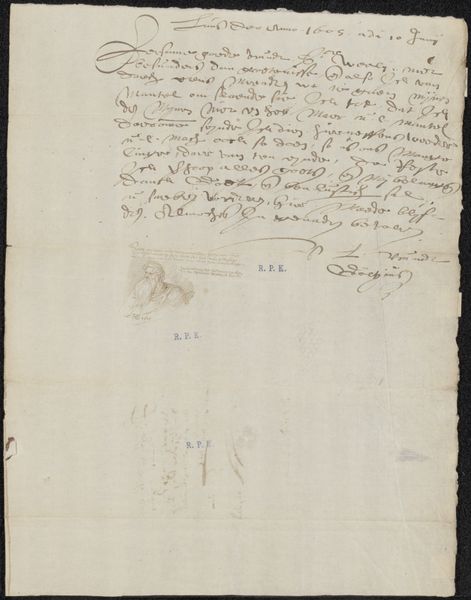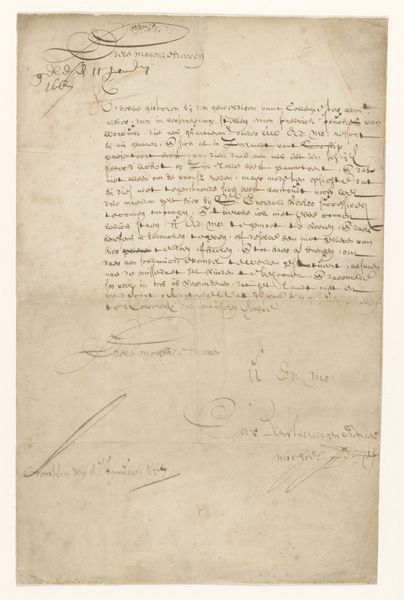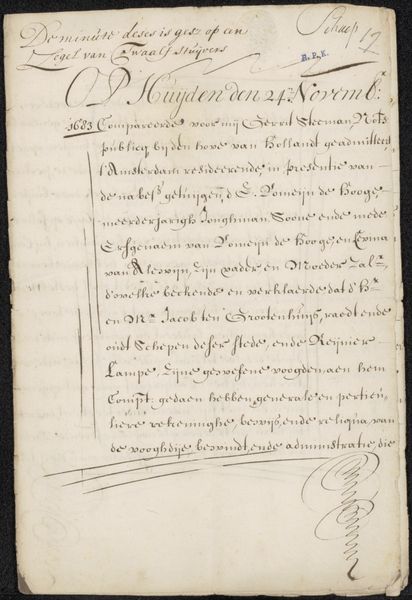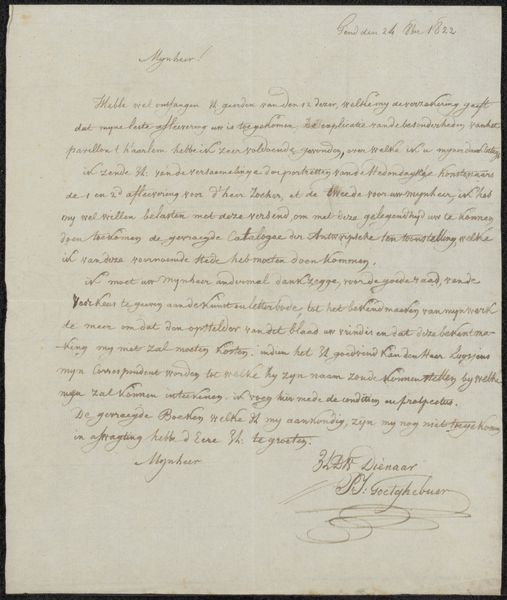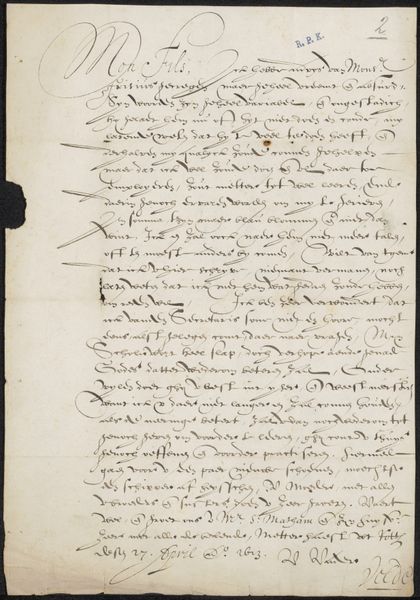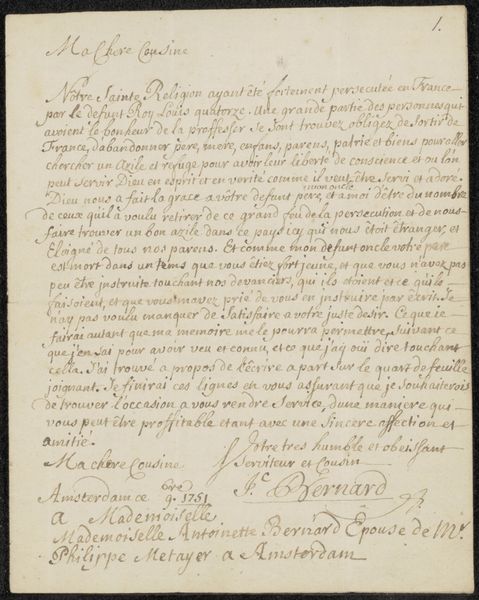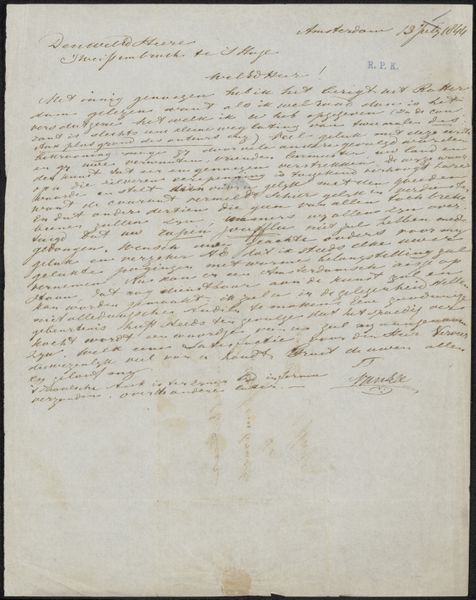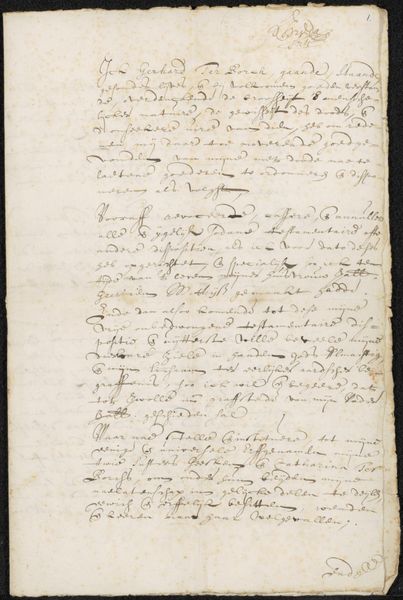
drawing, paper, ink
#
drawing
#
baroque
#
dutch-golden-age
#
paper
#
ink
#
calligraphy
Copyright: Rijks Museum: Open Domain
Editor: We're looking at "Brief aan Jacob Matham," thought to be from 1605, by Jan van de Velde I. It's an ink drawing on paper, held at the Rijksmuseum. The script is so stylized! What significance do you find in the act of writing itself, preserved like this? Curator: The very *form* of the script tells a story. Calligraphy, especially in the Baroque period, wasn't merely a utilitarian tool. It held potent symbolic weight. Look at the sweeping, extravagant flourishes—what feelings do they evoke? Editor: A sense of artistry, certainly. Almost theatrical. Curator: Precisely! Writing becomes performance. The letter itself, ostensibly a message, transforms into a display of skill, status, even emotion. How do you see this reflected in other visual arts of the Dutch Golden Age? Editor: It's interesting that you mention it, because portraits in this period showed great status and pride. Could the person writing this letter try to portray an elevated self-image through an expert use of line and flourish, like in the portraits? Curator: Yes, line, form and the symbol becomes a performance, just as the portraits do! What do you notice when comparing handwriting of different time periods and social classes? Editor: It's interesting that the personal touch of the script seems to offer insight into an individual. Curator: Exactly. We see how the message is both conveyed and obfuscated by its own artifice. And by seeing this, can't we appreciate more the deep meanings behind art?
Comments
No comments
Be the first to comment and join the conversation on the ultimate creative platform.
